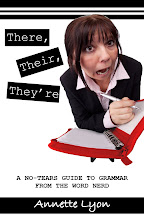We should all be doing our family history and temple work, right?
The thought makes many of us choke—isn’t the process convoluted, intimidating, and complicated?
Not anymore!
A decade ago, the process of completing one name, from doing the research to clearing a name with Temple Ready to doing the ordinance work, to confirming the final recording, took two dozen (or so) steps, depending on how you counted them. Completing those steps included several trips to family-history centers, file conversions between programs like PAF and Gedcom, and a lot more.
One problem with the old system was that patrons had to check Temple Ready CDs to see if temple work had already been done. Duplication became a huge problem because the CDs were updated only every few years, so people were regularly duplicating work that had been done since the last edition of CDs.
The face of family history and temple work has—and continues to—change. Thanks to the Internet and the new Family Search (new.familysearch.org), you can do family history work at home. All you need is a computer, an Internet connection, and a printer.
To start, register at new.FamilySearch.org. If you already have an LDS account, use that to log in. If you don’t, you’ll be prompted to create one with your membership record number and confirmation date (you can get those from your ward clerk). Choose a username and password. You'll use the same ID and password on all Church sites.
One logged in, search for ancestors you know. You can’t see information about anyone living—parents, siblings, aunts, uncles, etc. So to view your full tree, you’ll need to create placeholders, faux records of relatives who are still living that you'll then connect to dead relatives. This allows you to view your full family tree.
To do so, log in and go to the "Me and My Ancestors" page. With your name in the primary position on a pedigree (it'll be colored beige), you can add individual names, such as a parent. Follow the steps to search for an actual deceased ancestor the person you added is related to and create a relationship there. For example, create a placeholder for your living mother and then connect her as a daughter to her real, deceased, mother. Create as many placeholders as necessary to allow you to see your full tree.
Rest assured that placeholders only show up on your view; you are not altering information on the main site. Once you’ve created placeholders, your family tree will shoot backwards for generations, and you can get to work. This process is called bridging the "living horizon."
Now that you can see your pedigree, you'll see a variety of icons next to names. Using them, you can tell if temple work has been completed (a green check), has work to be done (a yellow arrow), or if there are possible issues (a yield sign with an exclamation mark).
But beware: even with the check mark, don’t assume all is well. Go through each name and line to verify all the information. You might find mistakes and additional work.
The new, user-friendly site will help you. For example, if you find a “duplicate spouses” icon, choose the names to look at, and you’ll get a side-by-side comparison. Any information that's the same between the spouses lights up on both sides of the split screen when you hover over it, such as identical birth or marriage dates. If there is enough to clearly show that these two spouse records are actually the same individual, you can combine the two records.
Do take caution when combining—or splitting—records. That does affect the site itself, not just on your view, although it can be undone later. Before taking such action, be sure the people listed really are (or are not) the same person.
A common duplication error you may find is when a second record is only a temple ordinance record rather than a birth certificate or other event. The temple record will have no other dates, locations, or any other identifying information. If it’s just an ordinance record, chances are pretty good that the work was done for the person whose real record you’re comparing it with, and you can combine them.
In other cases, you’ll need to play detective. For example, in my line, we found two women with the same name who married the same man. Based on birthdates, they appeared to be mother and daughter, which was possible; a woman with a child could have remarried, and after her death, her daughter from a previous marriage perhaps then married her former step-father.
But that wasn't the case. Significant digging—looking at maps, other dates, and other records—unearthed a mistake: on one record, a date was recorded incorrectly. Turns out the two were actually one woman; someone had simply mis-recorded her marriage date as her birth date.
“Cleaning up” your tree this way is your job. Discover who is missing, whose work has yet to be done, whose work has been done multiple times, who is listed several times as different people.
When resolving duplicates, use any information you’ve encountered and add it using the notes feature, giving as many details as you have (census, land, or court records; birth certificates; etc). The more detailed your records, the better—and the more useful for other researchers. Include your e-mail address in your profile so others can contact you.
The new Family Search has so many exciting things happening, and resolving duplicates is just the tip. Dive in and click around; the interface is surprisingly user-friendly. Experiment with the different views, like moving your great-grandmother to the primary position to see her tree, how to reserve names for temple work, and how to print off the PDF with the names for the temple.
The most amazing part is that the temple-ready process has been simplified from several dozen steps to just a handful: a few computer clicks, printing out a paper, and taking it to the temple to get the cards. By the time you get home, there’s a good chance the work you just performed will already be recorded online.
The old site, familysearch.org (without the "new") is undergoing a face lift, and will be merged with the new site in the future. In the meantime, the old site is still a great resource for finding records, such as books in the Family History Library in Salt Lake, city records, and much more.
The Church’s family history student manual tells us that doing this work is both our “privilege and responsibility” (p 2). It can be overwhelming, so start with a few small steps: get your toes wet by familiarizing yourself with the website. Next thing you know, you’ll be discovering your roots and having blessing pouring in from the other side of the veil.








